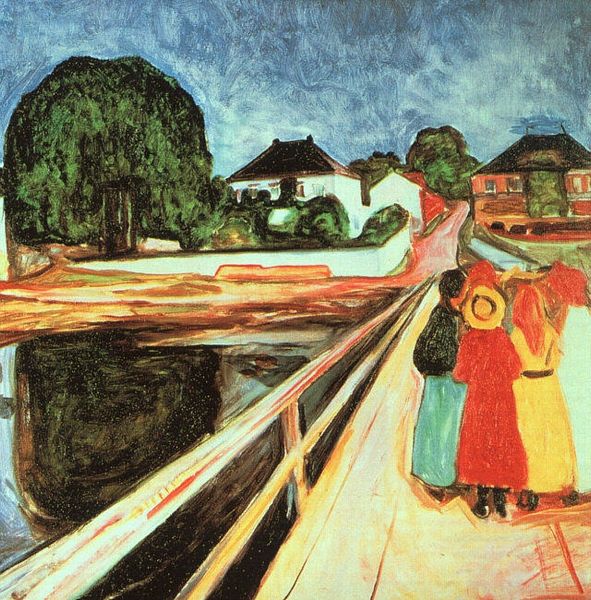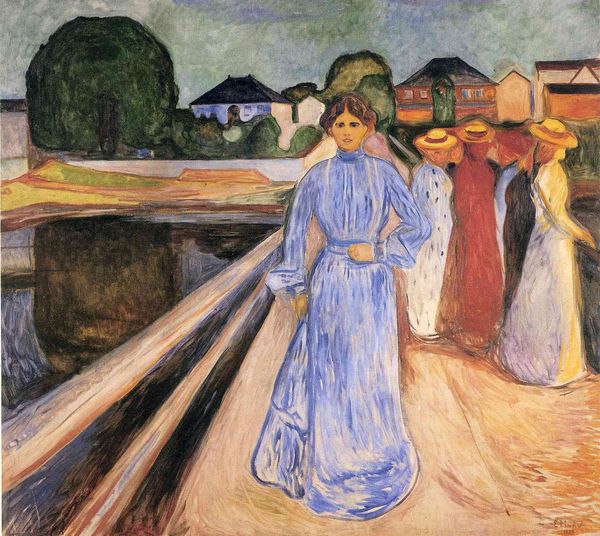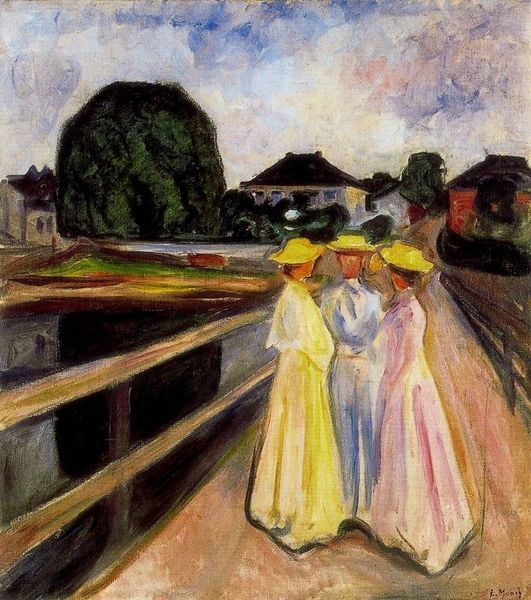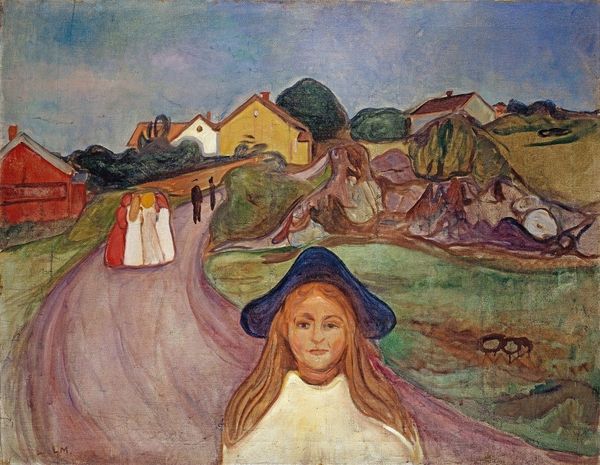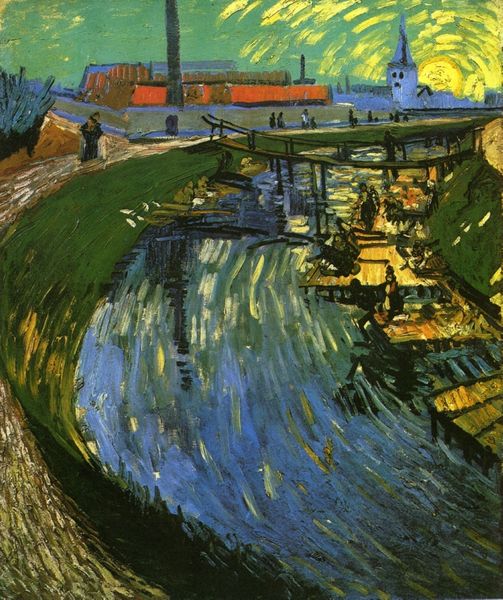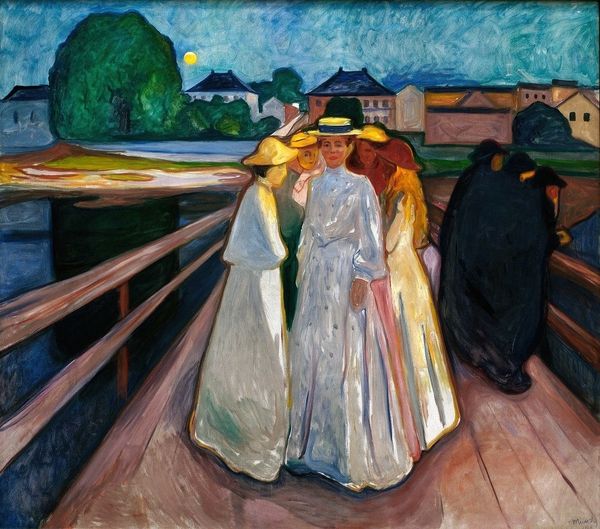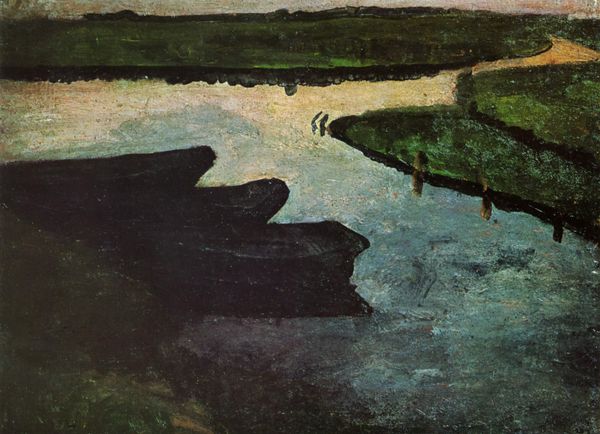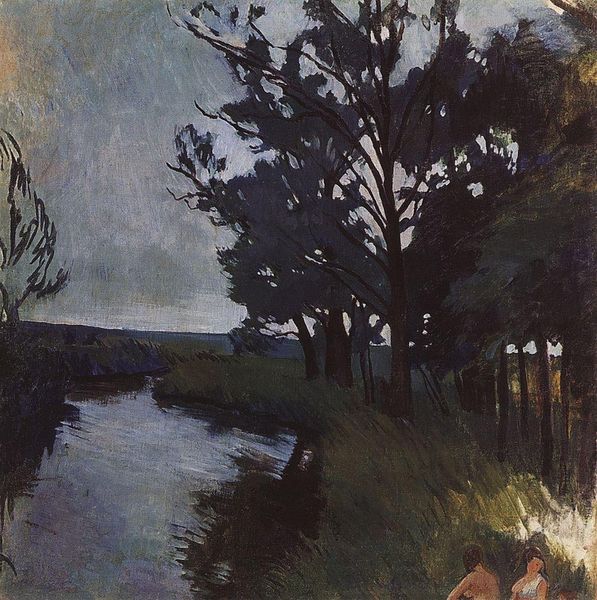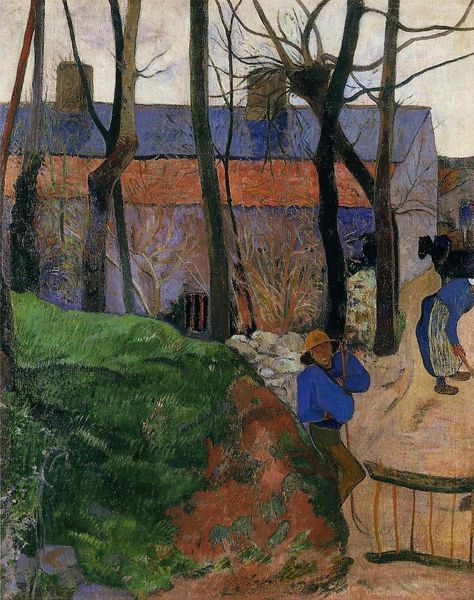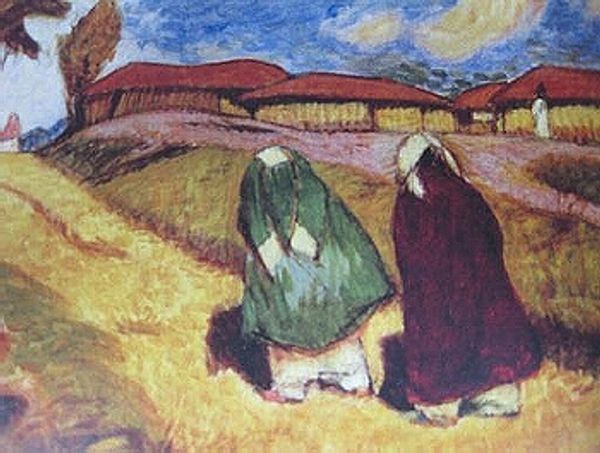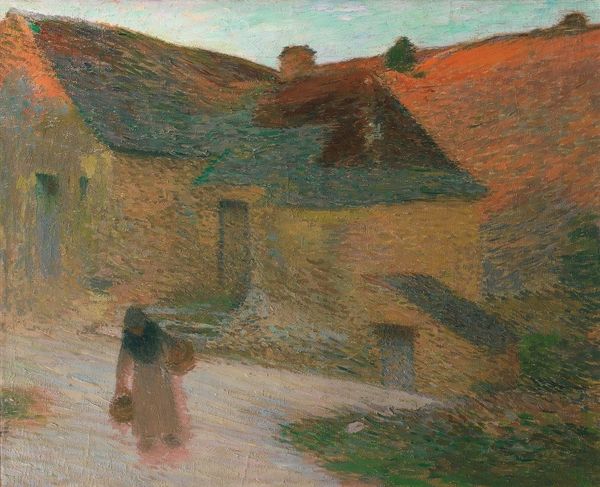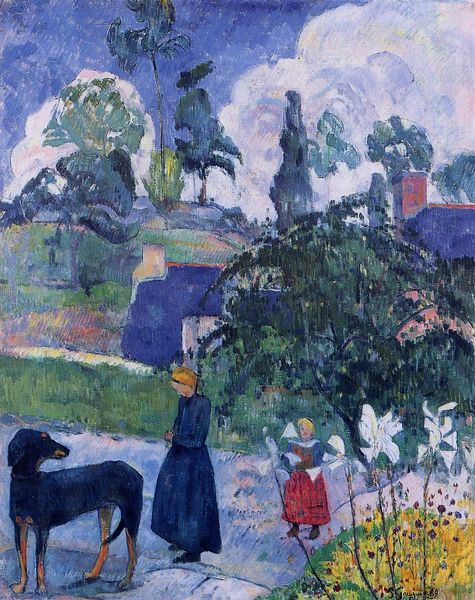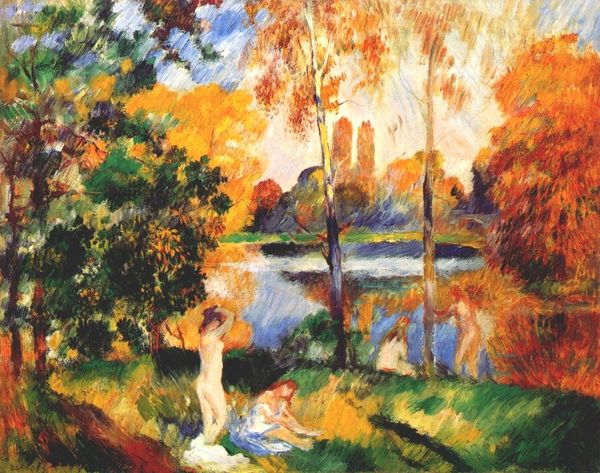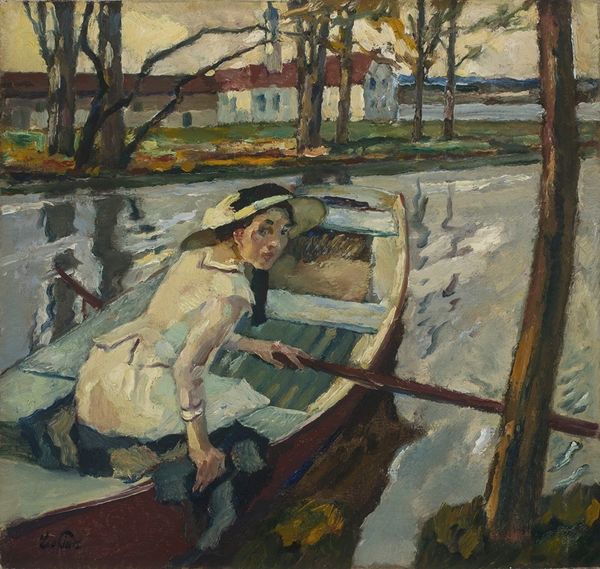
painting, oil-paint
#
portrait
#
painting
#
oil-paint
#
landscape
#
oil painting
#
neo expressionist
#
expressionism
#
cityscape
#
post-impressionism
#
expressionist
Dimensions: 136 x 125.5 cm
Copyright: Public domain
Edvard Munch made this painting, The Girls on the Bridge, with oil on canvas. The scene’s built with these loose, gestural marks, right? Like, you can practically feel Munch’s hand moving across the canvas. The colors are moody, reflecting his tendency towards melancholic themes. Look at the way he layers the paint, creating these amazing textures, especially in the water and the sky. It’s like he’s not just painting a scene, but capturing an emotional state. I'm struck by the reflection of the house in the water, how it seems solid and yet also distorted, just like memory. It's interesting to consider how this reflects the idea of fleeting and unstable moments, which ties in so well with Munch's exploration of human emotions. It reminds me a bit of Van Gogh’s approach, that intensity and emotional vulnerability, but with its own unique flavor. Isn't it interesting how art can be both a conversation and a deeply personal expression? We are left to ponder the emotional resonance of the piece, embracing its inherent ambiguities.
Comments
artera over 1 year ago
⋮
Edvard Munch's (1863-1944) art is so closely associated with themes of anguish and despair that it is easy to forget that he also painted scenes of great lyrical beauty. When this painting was made he was based in Germany, but he frequently returned home to Norway, and this charming picture was completed during one of these brief interludes. The scene is set on a bridge leading to the steamship pier at Asgarstrand, where Munch rented a house during the summer. This is an early version of the subject but, as was his custom when he was happy with an image, Munch reworked the theme endlessly, experimenting with different arrangements of the figures. He aso tried it out in different media: along with several paintings of this subject, he also produced lithograph and woodcut versions. On one level, Munch's painting is a celebration of the long summer nights in Norway, when it never got completely dark. Indeed, the original title of this picture was Summer Night. In addition, though, it is also about the sexual awakening of the girls. In this context, the phallic shape of the tree takes on a new significance. During the 1890s, the artist conceived the plan of linking a number of his pictures together to form a Frieze of Life, which he described as "a poem of life, love, and death." One section of this was devoted to puberty and the first stirrings of innocent desire. Here, Munch may have been influenced by Frank Wedekind's controversial play, The Awakening of Spring (1891), which dealt with the subject of adolescent love.
Join the conversation
Join millions of artists and users on Artera today and experience the ultimate creative platform.
